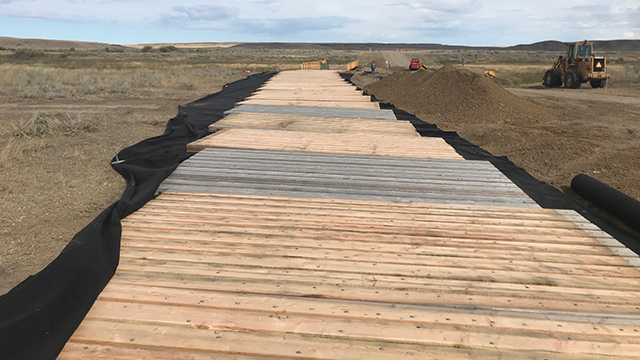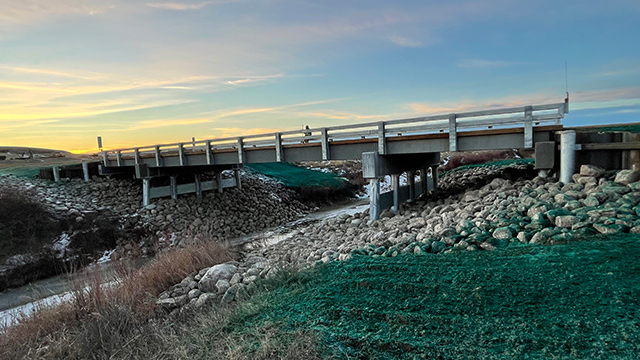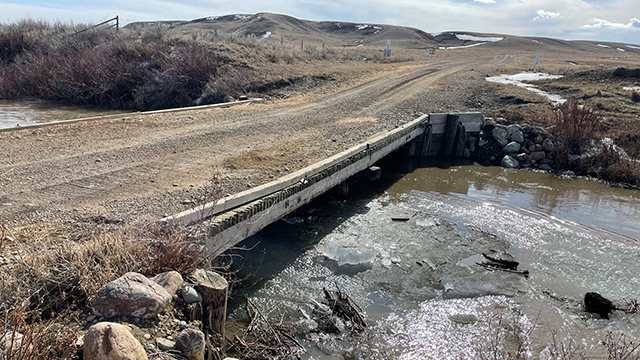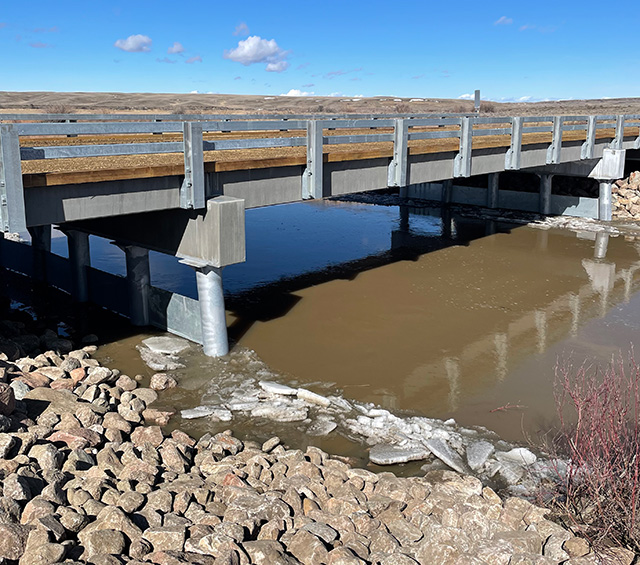A Green Bridge in Grasslands National Park – Sustainable Infrastructure
Grasslands National Park

A new concrete and steel bridge was recently built in Grasslands National Park replacing an old wooden bridge from the 1960’s that was in very poor condition.
The goal for this project was to develop a green design for the construction of a sustainable and durable bridge that would minimize impacts to the environment at all stages of the bridge’s lifecycle.
Bridging the Gap

The Dixon Bridge crosses the Frenchman River, providing important access to a significant portion of the West Block for Parks Operations, visitors, residents, and local ranchers. The bridge is within critical habitat for over 30 species at risk and an Emergency Protection Order for the Greater Sage Grouse, and in an area with significant archaeological artifacts. Detailed pre-construction surveys and impact assessments were completed to ensure minimal disturbance to critical habitat, sage grouse, and archaeological resources.
Flooding and grassland fires are a regular occurrence in this area making the design and access across the river critical, with fires often occurring during flooding.
Despite these challenges, the project team saw opportunities to incorporate sustainable and practical elements into the bridge design and construction.
Considering the goals and within the limitations of this project, the following was accomplished:
- Reduced on-site construction and water usage by using modular and pre-cast components
- Reduced emissions by 63% by reinforcing steel fabricated using an Electric Arc Furnace and reduced use of raw materials by using 95% recycled material
- Reduced the use of raw materials, lowered energy requirements and emissions by replacing 30% of the cement with slag for the cast-in-place concrete piles.
- Reduced transportation impacts by sourcing soil and aggregate within 18km of the construction site.
Climate Resilience & Life Cycle Considerations

Based on the limitations of the site, the bridge elevation is above a 1 in 50-year flood level and strengthened to withstand a 1 in 200-year flood. The road leading to the bridge was also raised and strengthened to mitigate flooding impacts.
The Dixon Bridge has been designed with the future in mind. The lifespan is estimated at 75 years, the modules allow for ease of modification, and at the end of its life most components can be recycled or salvaged.
The Parks Canada project team challenged the engineers and contractor to find ways to reduce our impacts while removing and replacing a small bridge in the middle of Grasslands National Park, and they rose to the challenge.


To learn more about the Government of Canada and Parks Canada’s greening and sustainability goals, refer to:
- Date modified :